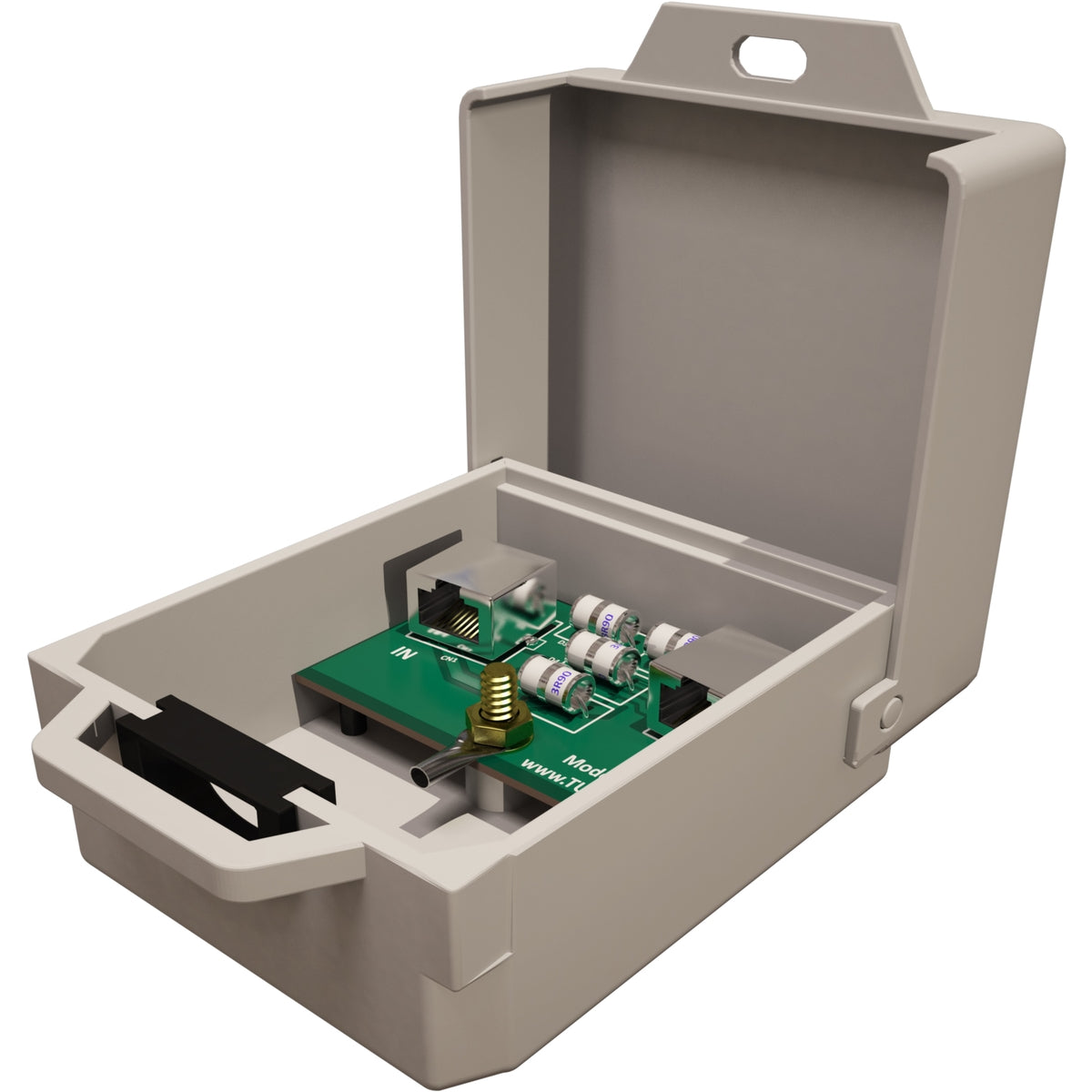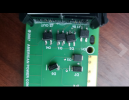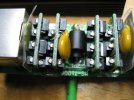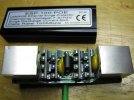But it is strange that the incoming and the outgoing cables share one "entrance" into the plastic box. Any surge on the shielding (if there is any) will likely bypass the PCB and "jump" from one cable to the adjacent one.
If a voltage spike "jumps" a cm or two through the air, we're talking dozens of kilovolts. If there are dozens of kV on a grounded shield ... it's game over, the ground connection has thoroughly failed (most likely overwhelmed by a lightning).
My wife worked (a long time ago) at an observatory on the top of Mount Haleakala, in Hawaii. Haleakala is infamous for its lightning storms. And their observatory was right next to a secretive defense installation, which had a megawatt laser they shine into the sky, and that makes all manner of electrical noise. All the sensitive / valuable / custom-built electronics was in a smallish room (perhaps 10x15 feet), which had a handful of electronics racks. That whole room was shielded on all sides with mesh fencing made out of copper wire, which then had solid aluminum sheets placed over it (the copper for good conductivity, the aluminum to be solid without gaps, and to have low inductance). All signals entered and left through overvoltage absorbers using coax cable; the sensitive (low-voltage) absorbers were built using sacrificial varistors, and were known as "bambi boxes" (because they have the same fate as bambi, in the "bambi vs. godzilla" movie).
One time they had a direct lightning hit. It unfortunately hit the power transformer on the power/telephone pole, so all the 120/240V lines had huge megavolt spikes on them. They had an old AT&T desk telephone, which was not recognizable: nothing but plastic melted into the metal parts; it left a burned spot on the wooden desk. Their computer (a PDP-11/70) was not in the shielded room, and it was simply thrown into the trash and replaced: All the serial cables to terminals and modems went right into it, and many chips had blown apart. The power transformer itself (it's a can, about 30cm diameter and 80cm tall) was heavily deformed, with a puddle of melted "goop" underneath it. It was amazingly lucky that the building didn't catch fire. The amazing thing: All the sensitive electronics in the Faraday cage survived undamaged, after the bambi boxes were replaced.
Most people are not in an area that is this lightning prone, so full Faraday cages are usually not required.








